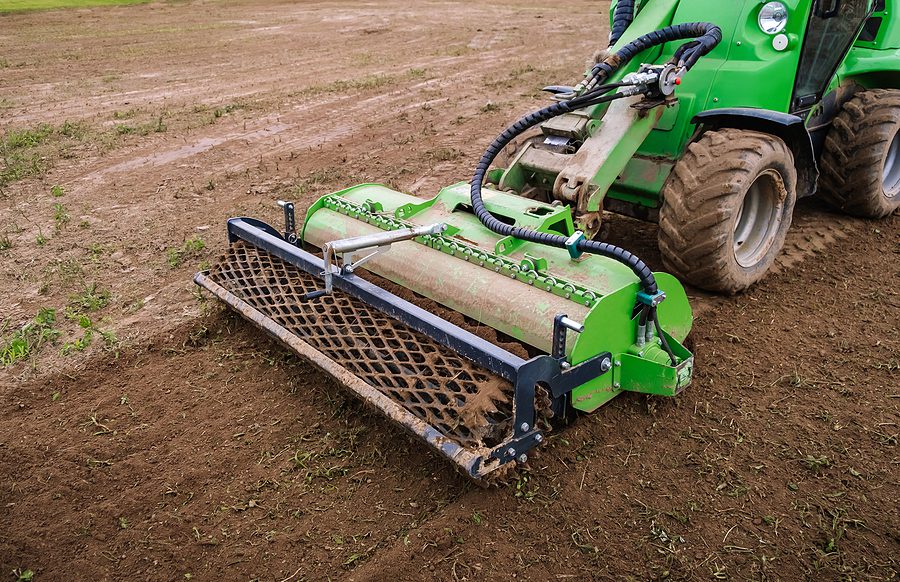A Simple Guide to How to Level Your Yard and Why It’s a Great Idea to do It

Did you know that lawn levelling is crucial? Many homeowners such as yourself often overlook this aspect.
You spend long hours painstakingly manicuring your lawn for that immaculate look. Yet, many miss out on the defining step of lawn levelling.
You’re no different from an artist. Your green lawn is your living canvas. Every bit of attention helps.
You know the ritual – water frequently, replace sod when required, and fertilize diligently. These steps breathe life into your lawn.
But, do you notice the bumps and dips? They mar the beauty of your efforts, leaving a not-so-perfect impression.
Beyond the aesthetic angle, there’s a practical side too! An uneven yard creates problems. One key issue: the draining is off.
Curious about how to level an uneven yard? Let’s dive in!
Why you should level your yard
A yard levelling project might feel challenging. Why take it on, right? But here’s a nugget of truth – an uneven lawn is a problem.
It doesn’t just pester you with minor irritations but can lead to costly repairs later. But, there’s more!
Prevents standing water
Uneven yard = Standing water. Bigger the unevenness, bigger the problem. Low spots on your lawn trap water. This can lead to:
Protects your gardens
Love your flower and vegetable gardens? Uneven yards can ruin them. How so? Unpredictable drainage. Water takes the path of least resistance, which can cause flooding in your gardens. Ultimately, this can encourage mold growth – a nightmare for any gardener.
Shield Your Home from Water Woes
Like the plants in your garden, your home too isn’t a fan of standing water. Especially, when it’s near the garage or the foundation.
Water can swiftly induce damage, flooding the basement, corroding structures, and provoking wood decay and mold.
Want to avoid all this mess? Start with a leveled and well-drained lawn.
The Financial Aspect of Levelling Your Yard
We have slightly discuss about this at the top, but let us break down the cost.
Smoothening out a few bumps on a small part of your lawn will be less hard on your pockets, somewhere around $500 to $1,000. However, a large yard troubled with egregious sloping could lighten your wallet by as much as $5,000.
Anyway, engaging a professional landscaping service to level your yard introduces a varying cost factor. How steep the charges would be depends on the size of your project.
Can You Level a Yard Singlehandedly?
The silver lining in the cost – you can take this up as a DIY project. Especially, if it’s just a part of your yard that’s uneven.
If the unleveled patch dips by less than two feet, then go! Roll up your sleeves and grab your tools.
But, a drop beyond two feet? It’s a signal to ring in the experts, a professional landscaper.
The Path to a Levelled Yard
Have you decided to conquer the uneven portion of your yard yourself? Great. Carve out space for a weekend devoted to this mission. You might have to retread some steps to ensure your lawn levels out perfectly, so block two consecutive days for this.
Here’s a list to help you prepare for your weekend project:
- Lawnmower
- Lawn dethatcher or a thatch rake
- Sturdy shovel
- Sufficient topsoil
- Sand
- Compost
- Wheelbarrow
- Garden hose or sprinklers
Step #1 – Begin with the Mow and Dethatch
Addressing an uneven lawn starts with a clean slate. Mow your grass, but not to the point where you expose the stems. Post the mow-down, inspect your lawn.
Check for excess thatch. Got any? Bring out your dethatcher or thatch rake. Start working on removing the surplus.
Step #2 – Look for and Lift Grass from Dips
Where’s the lowest point in your yard? You need to find it.
Once located, use your shovel to lift the grass from these low spots. A crucial note: Be careful to extract the entire root system. Drill your shovel two or three inches deep into the soil for this.
Step #3 – Enrich Dips with a Soil Mix
Get your wheelbarrow. It’s time to prepare a nutrient-rich soil mix. Your blend should contain equal parts of sand and topsoil, and half part of compost. Mix enough to fill all of your lawn’s dips. Go ahead and shovel the mixture onto the exposed dips.
Level them with the nearby areas. Put back the sod you removed in the previous step. Repeat this process for all dips or holes.
Step #4 – Level Out with Topsoil
Let’s smoothen out that lawn! It’s time to cover the lawn with a layer of the soil mix from step three. Remember – excess is not always good. Limit the layer to a maximum of 1/2 inch of topsoil. Anything more, and you risk blocking sunlight and air to the grass’s roots.
Step #5 – Water the Entire Lawn
The last step in your lawn level journey – water. It’s like the perfect send-off drink for your freshly-leveled lawn. A good shower helps the topsoil jell into the grass’s roots. This allows your grass to soak up all the nutrients critical for its recovery post levelling.
Your yard mirrors your care and commitment.
So, uneven patches are indeed disheartening. Besides being eyesores, they can disrupt water drainage and invite other complications. But don’t be disheartened!
You now have the leveling hacks to resurrect your lawn’s charm. Your yard will soon shows evenness, cleanliness, and beauty.
